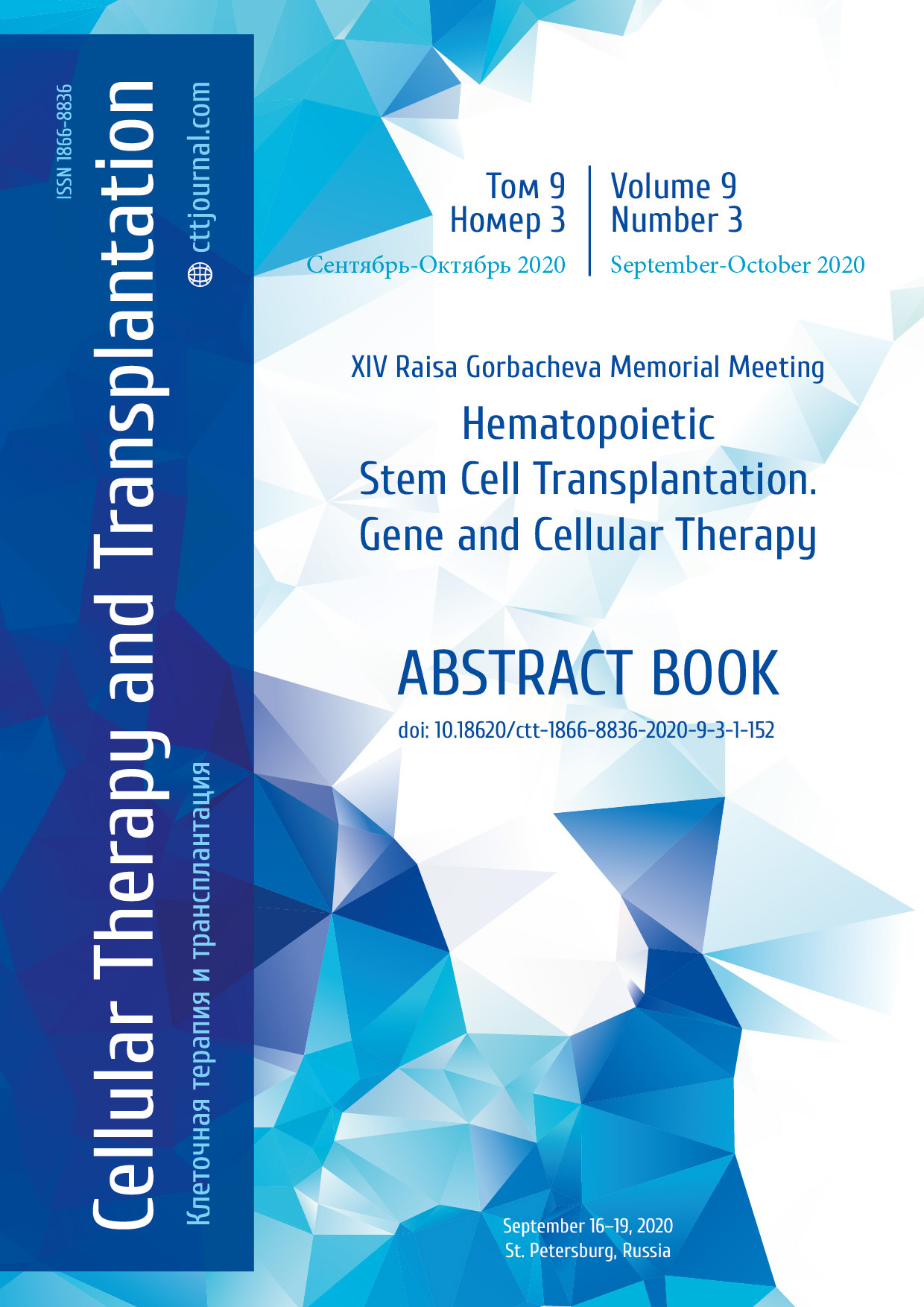PO-09. Efficiency comparison of haploidentical vs unrelated donor lymphocyte infusions in pediatric patients with relapsed acute lymphoblastic leukemia
Liubov A. Tsvetkova, Olesya V. Paina, Polina V. Kozhokar, Аnastasia S. Frolova, Zhemal Z. Rakhmanova, Nina V. Subora, Kirill A. Ekushov, Polina V. Sheveleva, Elena V. Babenko, Inna V. Markova, Aleksandr L. Alyanskiy, Sergey N. Bondarenko, Elena V. Semenova, Ludmila S. Zubarovskaya, Boris V. Afanasyev
RM Gorbacheva Research Institute of Pediatric Oncology, Hematology and Transplantation, Pavlov University, St. Petersburg, Russia
Contact: Dr. Liubov A. Tsvetkova, phone: +7(921) 643 3905, e-mail: tsvetluibov@mail.ru
Summary
Introduction
Allogeneic stem cell transplantation (allo-HCST) remains an important curative method for children with high-risk acute lymphoblastic leukemia (ALL). However, the incidence of relapse after allo-HSCT is still high, around 40-50% [1]. Donor lymphocyte infusion (DLI) is an immunotherapeutic option applied after allo-HSCT, which may improve the graft vs leukemia (GVL) effect. The numbers of haploidentical HSCT (haplo) increase every year, but there are no data about using haplo-DLI in pediatric patients. Hence, the aim of our study was analysis of relapse-free survival (RFS), overall survival (OS) and incidence of developing GvHD in children with relapsed ALL, who were treated with DLI after HSCT from haploidentical vs unrelated donor.
Patients and methods
We compared retrospectively 36 ALL patients at the median age of 10 y.o. (range, 1-18), who received DLI for treatment of their disease after 1st allo-HSCT, either haploidentical (n=19), or unrelated (n=17). These groups had similar disease characterististics. Relapses with >20% tumor cell burden was observed in 9 haplo-transplanted pts (47%), and 11 pts after unrelated HSCT (64%). The relapse with <20% tumor burden or MRD was identified in 10 haplo-transplanted pts (53%) and 6 (35%) in pts undergoing unrelated HSCT, p=0.379. Ten children received chemotherapy (53%) followed by DLI, or as a maintenance therapy; 5 pts (14%) were treated with monoclonal antibodies (blinatumomab, or inotuzumab ozogamicin) plus chemotherapy; 2 pts (11%) received monoclonal antibody alone, and 2 pts (11%) underwent DLI alone in haplo-transplant group. Ten children were treated with chemotherapy (59%) followed by DLI, or as a maintenance therapy; 5 pts (29%) received monoclonal antibody+chemotherapy, one patient (6%) was treated with a single monoclonal antibody, one pt (6%) received DLI alone in the group subjected to unrelated HSCT (p=0.7). The median time from haplo-HSCT to DLI was 203 days (range from 48 to 156), from unrelated HSCT to DLI, 169 days (range of 26 to 1012), p=0.5. The most commonly used first haplo-DLI dose was 5*105 (range, 1*105-5*107), unrelated dose 5.5*105 (range, 1*104-2.3*107), p=0.3. Median total dose of lymphocyte infusions was 1.6*106 (range, 1.2*104-5*107) in haplo-DLI and 1.5*106 (range, 1.4*105-4.5*107) in unrelated DLI, p=0.45. We used Kaplan-Meier method and Mann-Whitney U-test in SPSS for statistical analysis. Time of relapse-free survival was determined as a time periodbetween the first DLI dose and relapse of the disease, time of overall survival, as a time period between the first dose DLI and death, or 2nd transplantation.
Results
The median follow-up among the survival pts was 2.5 years. RFS rates were significant higher in haplo-DLI, than in unrelated DLI: 42% vs 0%, p=0.08. Overall survival was 58% in haplo group as compared with 29% in the unrelated transplant group, p=0.2. Induction of GvHD grade 2-3 was a rare complication and occurred in 2/19 (11%) pts after haplo-DLI versus 3/17 (18%) after unrelated DLI, p= 0.7. The most children who developed this complication had a signs of GvHD previously. Neither patient died with GvHD. We did not also see any association between RFS and incidence of GvHD, p=0.7.
Conclusion
Despite limited quantity of cases, these data suggest, that haplo DLI with combination of chemotherapy/monoclonal antibody may be more effective, than unrelated DLI for treatment relapse and MRD in ALL children (p=0.08). In conclusion, DLI is safe even for those patients, who had GvHD earlier. Randomized studies on the topic are required in future.
Reference
1. Bhagirathbhai Dholaria et al. Clinical applications of donor lymphocyte infusion from an HLA-haploidentical donor: consensus recommendations from the Acute Leukemia Working Party of the EBMT, Haematologica. 2020 Jan; 105(1): 47-58.
Keywords
Allo-HSCT, acute lymphoblastic leukemia, donor lymphocyte infusions.


